
David LaFleur is an art director at AG and a big fan of Pete Hawley's work. When David and I began corresponding a year or two ago he told me he had heard that the AG 'art vault' still contained hundreds of Pete Hawley's originals. Here are some excerpts from David's emails that shed a bit of light on Pete's work for AG:
"Just by chance today, I happened to spot a couple of Hawley's sitting on a stack of art in a side-room. Planners often request originals from our archive for purposes of reference or for "re-works". One was a monkey...he did lots of critters for AG. This particular piece was painted on acetate with a piece of colorful burlap beneath (a technique he used to great effect, often letting several different fabric patterns show through in select areas). If you saw it printed today, you would swear it was Photoshopped!"
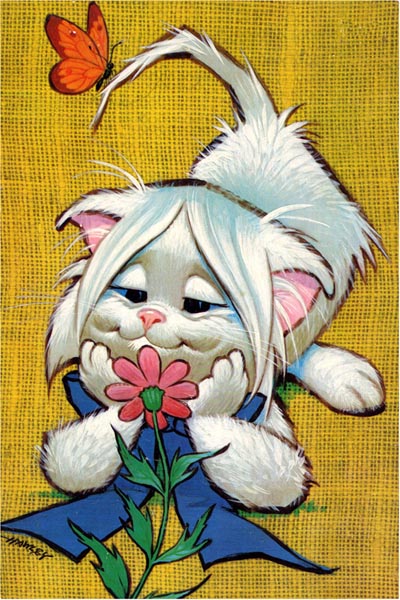
"When I get a spare minute, I'm determined to get down to the vault and do some real detective work."
... and more recently:
"A couple of months ago [a friend] and I were cleaning out several file cabinets and ran across a couple of Hawley sketches and two gouache comps. [My friend] said there used to be a three-drawer file cabinet full of his originals and sketches. In addition, we both ventured to the "art vault" and indeed, verified the presence of dozens if not hundreds of Pete's originals. They look as fresh as the day they were done! The Halloween stuff is killer."
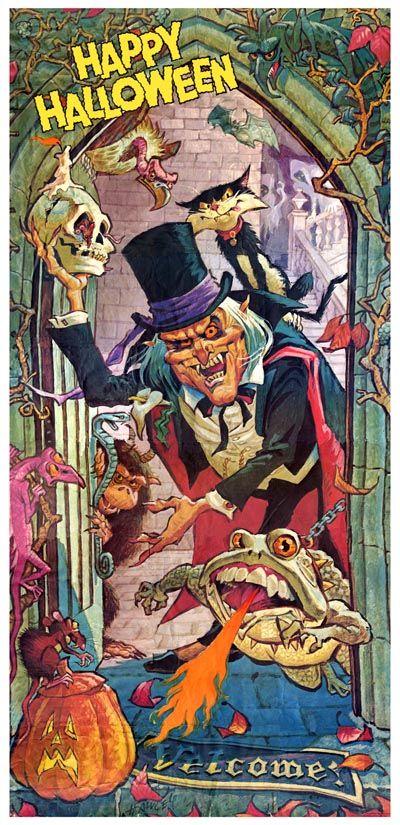
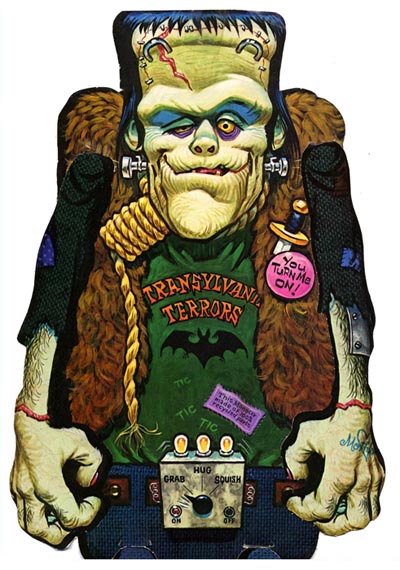
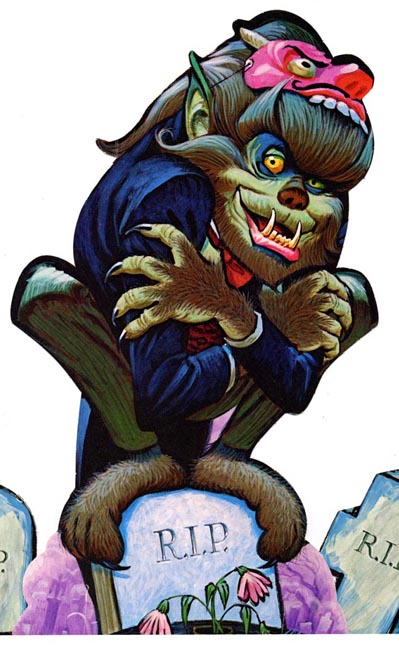
Tantalizing news! But what was most invaluable was David telling me about an art director named Lily Fueger, who worked closely with Pete Hawley for many of the AG years. I was able to connect with Lily and spent a good half hour interviewing her on the phone yesterday. With her help we now have a comprehensive overview of the last and perhaps most important and prolific phase in Pete Hawley's career.

Lily told me that when Irving Stone, the head of American Greetings, saw Pete Hawley's Betsy Bell ads in the early 60's he realized this work would be perfect for greeting cards.
Stone contacted Pete and, according to Lily, the artist was ready to work for American Greetings. Pete gladly accepted the contract. He saw the potential of a steady income with a good client as an ideal situation.
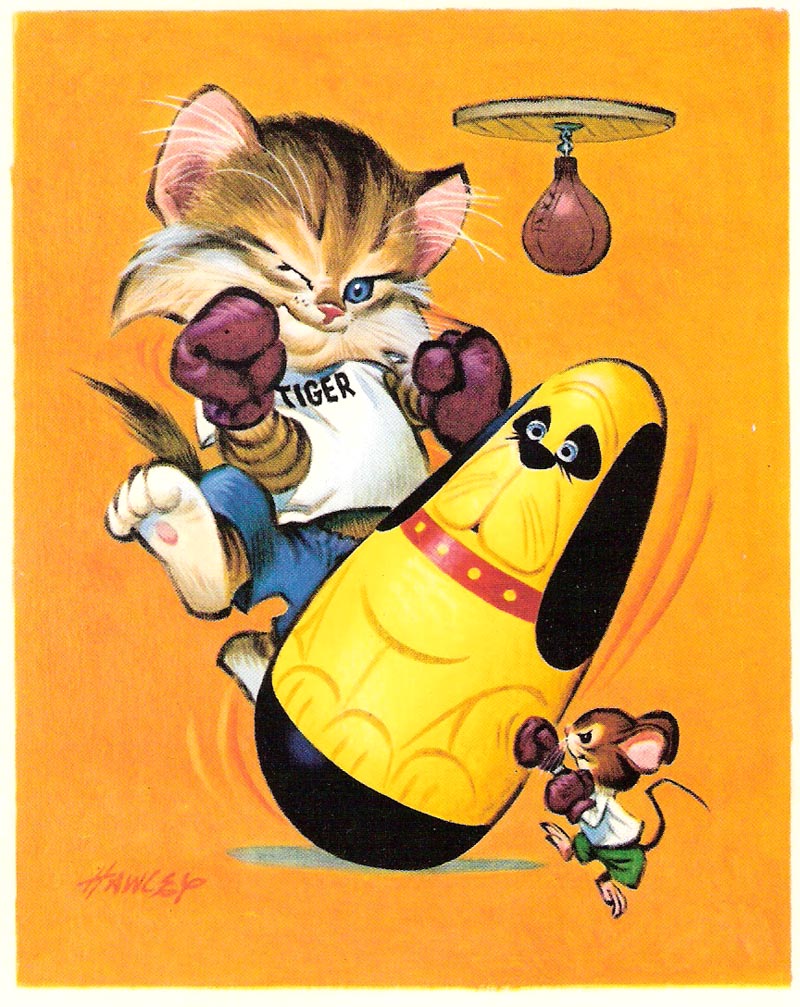
Since we know the Hawleys moved to Sedona in 1964, we now have a clear timeline for when this new arrangement began. Lily says she must have been working as an artist at AG when she first saw Pete. "It was at a luncheon and I looked over at him and I thought, "My God, he looks like a cowboy." He was a handsome man. He had those sunburnt eyes."

Pete had come to AG to sign the contract that would initiate this next phase of his career. Lily says, "I just happened to be at that luncheon and I was sitting quite a distance away from him. I didn't have a chance to talk to him. But I had this impression of a very nice man."
"It was only later when I was given the responsibility of calling him and art directing and talking to him over the phone that we built up a very fine friendship. Pete was quiet and had a terrific sense of humour," says Lily.
I asked Lily, as an artist who was working at American Greetings in that early 1960's period, what she thought of Pete Hawley's work when it first started coming in. She says, "I thought it was fabulous."
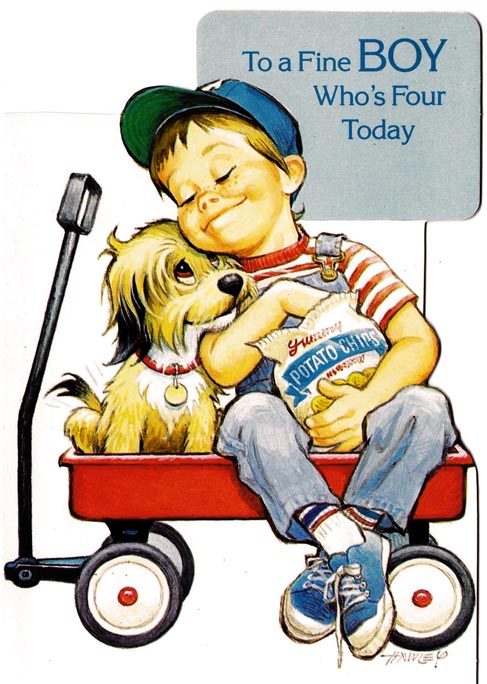
"The animation was terrific. The expressions on the children's faces and the humour was fabulous," she says emphatically. "You know, a real pro. And very unique work. No one worked like Pete."

For a long time there has been the impression among Pete Hawley afficionados that AG, hoping to exploit the success of the artist's work, built a sort of "Pete Hawley Label" - a stable of artists who would work in his style to crank out additional material. Lily quickly debunks that theory. "Oh no. I don't know what the upper officials said about this but no one ever tried to imitate his work. It was very unique. No artist at AG would even dare to try to imitate him. That would not be a kosher thing to do."
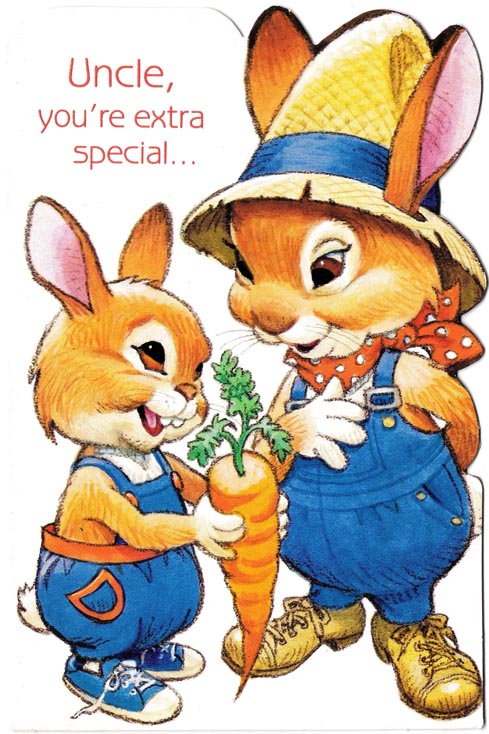
"But in fact I can say that there was someone at Hallmark who tried to imitate his style. We were amazed at this. It was just for a short while... and maybe word got back to them that we were so shocked that they were even attempting this that they stopped."

I wondered if Lily might know if Pete was so busy with AG work under the terms of his contract that he no longer had time for other clients. She remembers him having other projects - unrelated to AG - on the go. That jibes with what Pete's granddaughter Shelley told me.

Shelley sent this series Pete did for a pharmaceutical client that looks to me like it was done during the late 60's or early 70's.
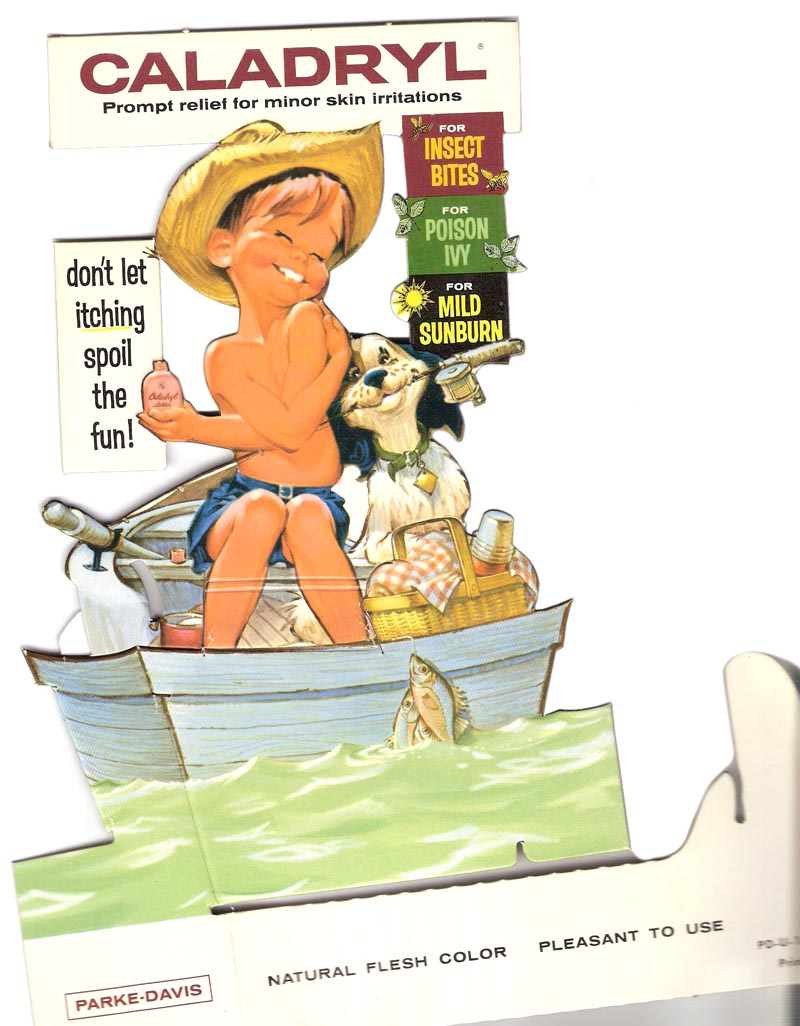
Both Shelley and Lily are under the impression, though, that such other assignments became increasingly rare for Pete as his involvement with AG continued. The thinking is that by the 70's he had settled into a comfortable routine with his one good client and let other freelance opportunities fizzle out.
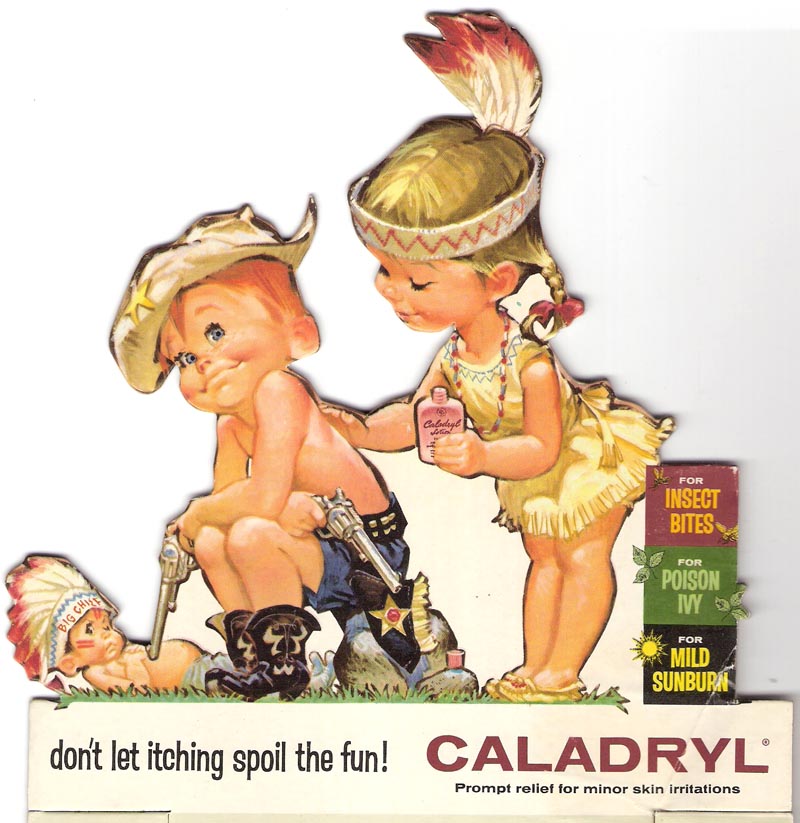
Lily confirms that Pete never got involved in the popular movement among illustrators to move to the South West and become "Cowboy Painters". "No," she says, "no, he didn't. In fact he sort of looked down on it. He thought it was a lot of fakery, you know, taking advantage of the Indian influence and doing cowboys and so forth. He didn't do any fine art painting. When I visited him in Sedona he took me to some of the galleries. He got a big kick out of some of the "artwork" they were selling," she says with a chuckle. "And I think it was because of his expertise. He wasn't jealous at all."
When Lily became Pete's art director around 1974, or '75, she typically assigned him to create six to ten new pieces per month.
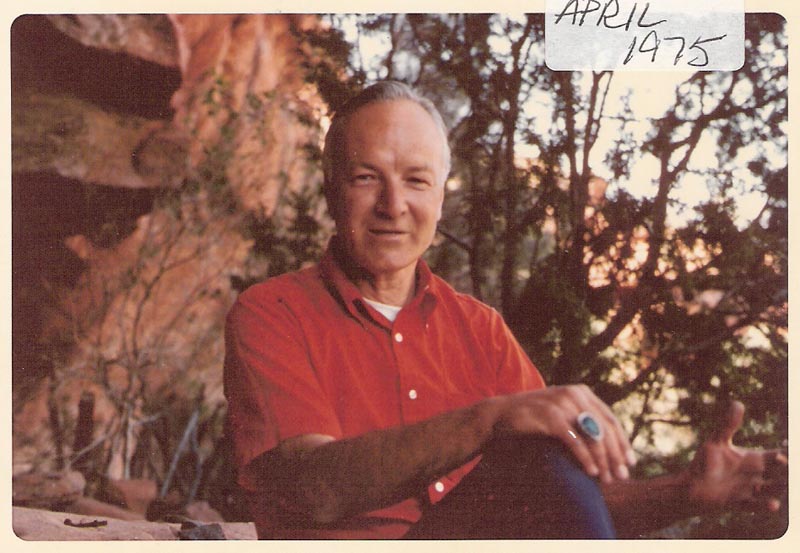
"He was quite proficient," she says, "He would use children in the neighbourhood as models." A practice that went all the way back to the late 1940's, when Pete's own children were often pressed into service as models for their dad's assignments.
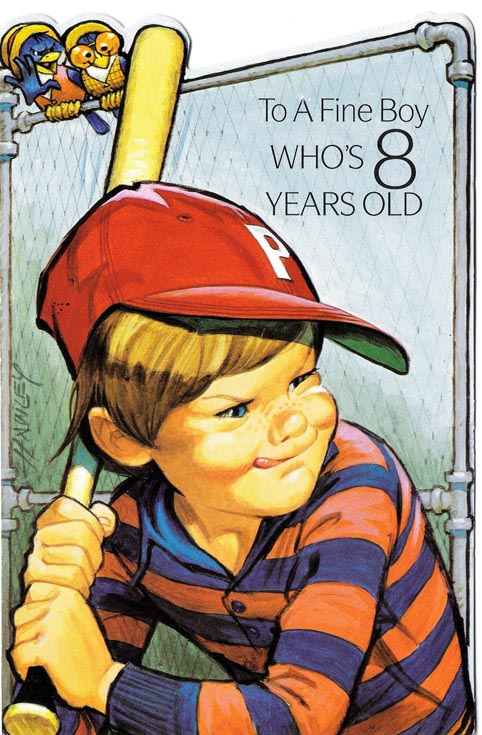
I asked Lily to describe the way she an Pete would work through a typical assignment. She begins, "Most of the time I would art direct on the phone. We would read through the copy, then I would offer some suggestions about the subject matter... I would encourage Pete to have, for instance, the boy in question just hilariously laughing. Sometimes I would suggest a certain colour combination. Pete usually got stuck with very primary colours and those were, at one time, going out of style and all sorts of colour combinations were coming in."
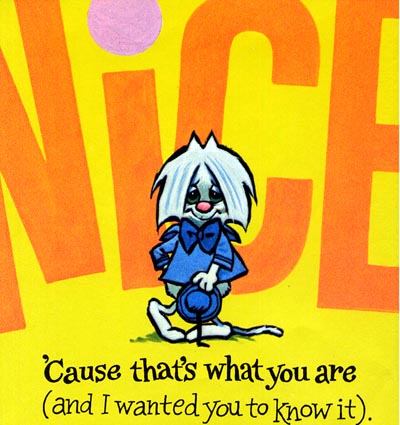
"So I would send Pete clips of all sorts of colour combinations that he could use. And he would use them very well! In fact he really liked some of the new colour combinations I would send him. You know how we get into a rut with our compositions or our colour?" she chuckles. "Pete never took offense at my suggesting things of that sort."

"Of course I never had to suggest anything for his drawing... his execution. It was always so marvelous. He knew how I valued his work and that meant a lot to him." Pete never sent back sketches for approval. Lily says, "No. It wasn't necessary. He knew exactly what I was talking about."
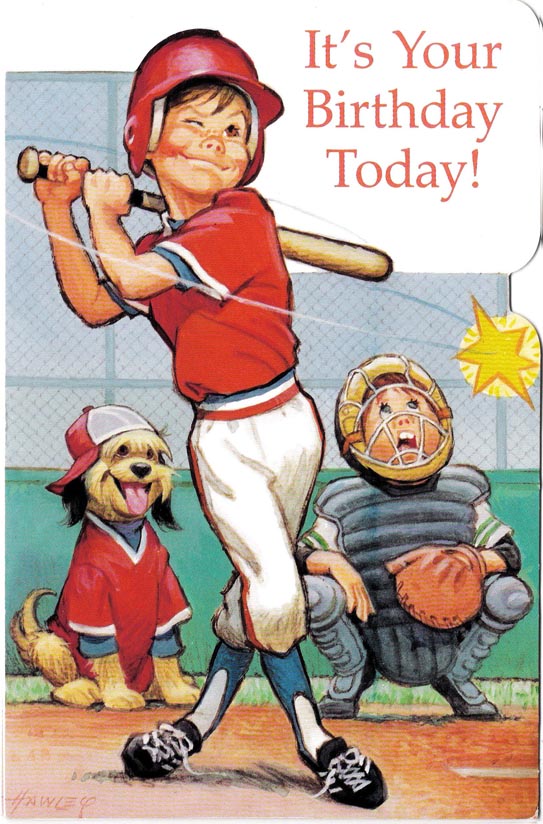
Lily continues, "Sometimes, when I called he would be in a bad mood and I would joke him out of it. He liked that," she chuckles, "he liked that a lot. He could get very sour sometimes because Sedona was becoming so overcrowded, and the beautiful area where he lived was being spoiled by urban sprawl."

Pete worked 1/3 up over the printed size, in gouache, on Bainbridge illustration board. Lilly says, "He could create marvelous depth and shadows with it... he was a pro." Usually when a group of illustrations came in from Pete I would call him and tell him what I thought of them, and then give him his next assignment. So he would have a break for a few days each month."






Lily and Pete worked together as artist and art director for about 17 years, until Lily retired in 1991. She thinks Pete likely retired at the same time. It was that year that Lily was invited out to spend a week at the Hawley home in Sedona when she met Pete's wife, Micky. "I was very impressed with her," says Lily, "She was a very sweet woman; very smart."
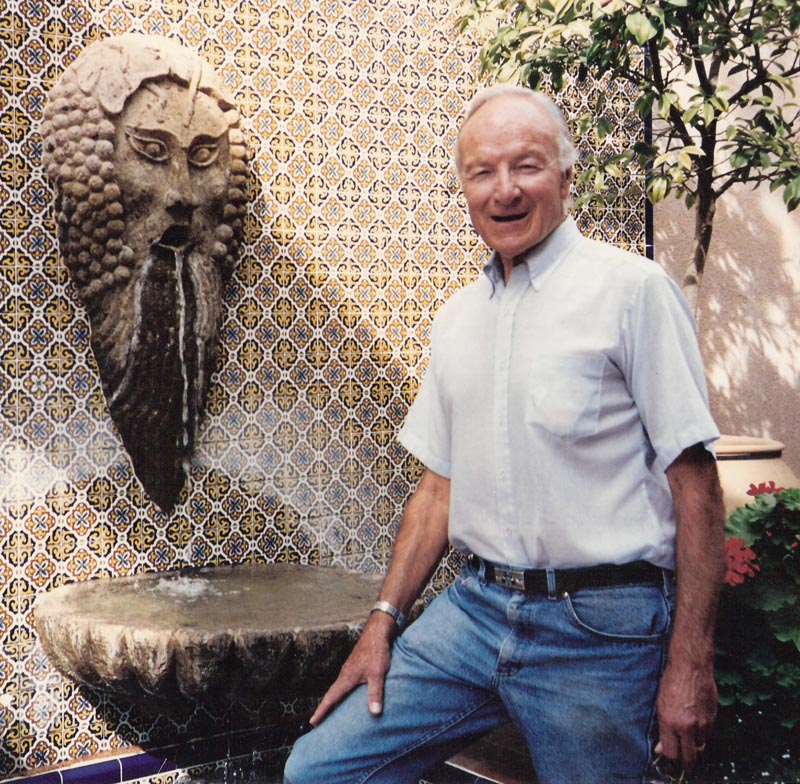
Sadly, Micky suffered from serious health ailments later in life. Tragically, the Hawley's youngest daughter, Jane, also became extremely ill around the late 1980's. Shelley asked her dad, Pete's son Michael, if Pete ever actually retired. He said no. With both Micky and Jane to care for, Pete needed to continue bringing in as much income as possible. "He was working right up to the very end," says Shelley. Jane died in 1993. Micky passed away the following year.

Pete Hawley, having for years brought smiles to the faces of millions of people, young and old, died February 10, 1996.
* I have so many people to thank this week, chief among them Shelley Nugent for all her invaluable assistance with this week's series on her grandpa, Pete Hawley.
* Thanks as well to Shane Glines of Cartoon Retro for his tremendous generosity. Many of the scans we've seen this week are from his Pete Hawley archives and the phases of Pete's career would not have been nearly as thoroughly illustrated without them.
* David LaFleur of American Greetings and Lily Fueger, formerly of AG - thank you both for the "inside scoop" on Pete Hawley's work for that company.
* David at plan59.com for digging up the archived newspaper articles on the young Pete Hawley.
* And finally thanks to Glen Mullaly and Scott Caple who provided many additional scans for today's post and Dave Broad who provided a Betsy Bell ad seen earlier in the week.
* My Pete Hawley Flickr set
Wow Leif, this was a great one. I'm pretty sure I received a couple of those cards during my childhood.
ReplyDeleteWow...this has been my favorite week. I mean, it's hard to top Bernie Fuchs, but I've been absorbing a lot of Pete's work for a project I'm doing I just can't get enough of it.
ReplyDeleteOddly I see a connection to the way Disney did some of their work in the 60s and 70s. There's something about it. They both did "cute" so well but I have to think Hawley must have influenced somebody there. Just a wild idea maybe.
Awesome stuff and I'm glad everyone was so generous to contribute too!
=s=
Fantastic artwork. Thanks for all this. Being in England, I had never heard of Pete Hawley before.
ReplyDeleteThere really should be some big fat art books about these great illustrators, instead of yet another book about Renoir or Monet.
Sorry, having praised your site quite recently I am amazed that you see any merit in this kind of 'art' (using the word with irony.)
ReplyDeleteI often wondered who drew these type of things and always assumed it would be some nobody who hadn't the talent to get any other work in the world of illustration or advertising.
Mike (England)
Jason, Shane and Don;
ReplyDeleteThank you all for your enthusiastic and encouraging comments. I certainly appreciate them and I'm sure the Hawley family will enjoy reading them as well.
Mike (England);
While I'm never opposed to well reasoned criticism to the material I post, I have to admit I don't understand what motivates one to go to the time and effort of leaving an unhelpful and insulting remark that will only offend the party who obviously went to a lot of effort in preparing this material and, more importantly, the family members and friends who loved the artist in question. Surely it must be clear to you that the children and grandchildren of this artist generously donated of their time, knowledge and artwork so that his story could be told, and it doesn't take a giant leap to realize they will be reading these comments. That you would have such complete disregard for their feelings leaves me feeling angry and disheartened.
There's an old saying: "If you have nothing nice to say, then say nothing." I encourage you to take it to heart. If you really feel the need to be critical, support your criticism with some substantial argument. Your comment is the kind of shallow, wrong-headed thoughtlessness that illustrators have had to endure for much of the last hundred years and is entirely contrary to the spirit of this blog.
Holy moly, that's a lot of work - he was really an illustrating machine! Love those Halloween specials. Thanks for the extensive post, Leif.
ReplyDeleteMike:
Haha - that's pretty funny. Of course, any of the subject matter here is...well... subjective, but man, you must not have personal experience in the arts at all. Not to appreciate the talent and effort obviously put forth to create the imagery shown, at the very least displays an elementary understanding of the arts in general.
As seen on this site, there have been a lot of excellent illustrators that have floated between attitudes throughout their careers, but kudos to Hawley for continuing to hammer out his unique, noteworthy style.
Thank you for another great post. I have clipped a folder of the Betsy Bell
ReplyDeleteillustrations and have always admired them. I have enjoyed seeing all the
other art Pete Hawley has done that I was not aware of.
The animation style and the good drawing it takes to do it in such
a unique way is as difficult to do as any kind of art. I like his work very much!
Awesome! These cards are fantastic. I greatly appreciate all the generous time and effort from all parties involved.
ReplyDeleteGreat retrospective article Leif! It was fascinating to read how the freelancers for AG worked in the past. When I worked at AG WHQ I had the chance to talk with David a couple of times about Pete over lunches. You could tell how much Pete's illustration meant to David who is a superior skilled painter in his own right. I was also surprised and pleased by how much Pete's work is still respected around the studio. A true master.
ReplyDeleteBest,
Steve
Powerful man!
ReplyDeleteHe has a way with lighting and those colored shades and shadows.
Funny contrast also here between all those cuties and the Haloween monsters.
Leif, in reference to Mike's arrogant comments, I have witnessed the same sort of attitude before, from what I call non-commercial art snobs. Norman Rockwell has been hammered by art snobs for decades, yet it didn't seem to effect the long lasting admiration and popularity of his work, by much of the illustration community and the public alike.
ReplyDeleteI was vaguely familiar with Pete Hawley's work, but TI has really exposed how versatile, prolific and uniquely talented he really was. I particularly admire versatility, because it takes very sound drawing skills, more than adequate design skills, the ability to change course and experiment, and a creative mind that can dream up workable concepts with great clarity.
It is evident to me, that Pete Hawley's work has put a smile on a lot of people's faces.. and that-in-itself, is quite an achievement. Sorry that Mike (England) doesn't see Hawley's abundant talent.
Tom Watson
Hey Lief,
ReplyDeleteThanks for the mention in the post...but the few pieces i have by Hawley PALE in comparison to everyone else's contributions...I just happened to start picking up the greeting cars whenever i saw them in the seventies and eighties, they eventually disappeared forom the racks.... it never occurred to me to actually get in touch with the guy or his reps, but then the world was a different place in those days, especially in a small town in Southwestern Ontario. i had no idea that so much of his ORIGINAL work is around. Thanks for doing so much to put this right.
Wooooooowwww! Look at all the great Hawley greeting card art!!! Excellent! I definitely remember his style dominating that genre of greeting cards.
ReplyDeleteAnd is it me or does that "Happy Halloween" card have Rankin-Bass written all over it? Did he work for them at any time, Leif?
Wonderful, all-encompassing job you've done on Hawley Leif---thanks very much.
ReplyDeleteThere are many ways in which to view art (or in this case illustration). One can (& sometimes should) set aside such aspects of time or purpose (i.e., market) a work was created during or for & admire strictly from the perspective of craft...
Thanks for giving a name to this artist. As a child I was fascinated with his crazy blue shadows and loose brush work in the greeting cards. It's amazing to see how diverse and prolific he was and I love his mature illustrations.
ReplyDeleteHello Leif,
ReplyDeleteThanks for sharing all these wonderful
images and the time you take to get info on such a fantastic artist.
The CUTE factor in all these cards are pretty awesome.
A wonderful retrospective for a wonderful talent. Thanks Leif.
ReplyDeleteI'm sorry if I've caused offence with my last comment, that wasn't the intention or was it to belittle the efforts of yourself and others connected with the work. For that please accept my apologies!
ReplyDeleteBut... Perhaps I can put it this way, I don't see the appeal at all in the style of illustration work - particularly the greetings cards. Here in the UK such imagery on cards shouts 'cheap and cheerful' and appeals to people who I have to say in the main have little or no perception of artistic ability or merit - which is not to say Hawley's work hasn't any.
In another way given where this kind of work appears and still does in the UK (cheap children's books and greeting cards) I have always got the impression that artists who do it do so because we all have to earn a living - and sometimes that means taking jobs that we'd rather not do if the choice was available (isn't this why so much social housing is so badly designed?)
Can someone enlighten me as to the appeal of it? Somebody compared it to some of Disney's work, well to me Disney too has work of great quality and sometimes work that surely he must have been almost ashamed to put out (I can't think of examples).
It gets described as 'cute', but isn't this the kind of thing that Jeff Koons is parodying (and in a critical way) or am I missing something there too!
Again, my apologies for any offence caused I hope this can move things on to debate
Mike (England)
Anon, brought up a point about taking work beneath the threshold of artistic merit. It's all supposition now, but I kind of feel Pete was enjoying the opportunity to do these over the top 'cute' cards. His execution was never compromised and he did work these ultra cute creatures into some of his more adult illustrations.
ReplyDeleteThanks for the great post on Pete Hawley! Nice to find out about the guy behind the brush...I've have some samples in my own "Hawley" file and often wondered about the artist at AG.
ReplyDeleteThanks again, and thanks for all the other great things you've posted.
As much as I like Hawley's early work, I was really knocked out by these examples of his cards. The technique and craft is easy to overlook because so many of the next generation of card illustrators took notes from Hawley's work. But what I think the critical commenters don't get is that there is a finest hair of a line between a card expressing those sweet and pure emotions of childhood and one that drips mauldlin. Hawley knew where that line was and never crossed it.
ReplyDeleteThanks so much for sharing this with us, Leif.
This was great post thanks. It's strange, and this happens to me a lot when reading Today's Inspiration, seeing one of these cards out of context I probably wouldn't give it a second glance. But reading about the artist here and putting everything in context with his body of work I really get an appreciation for art I may not normally pay attention to.
ReplyDeleteThank you.
Leif
ReplyDeleteI came across your blog via Drawn and really appreciate you putting Hawley's work and life out there.
Great job!
I started at AG in 1978 and was somewhat familiar with his work, even though I was doing the funny cards for what was then called HiBrow Studios---Pete worked in humorous with Lily, who I knew.
Wish I had the chance to meet him.
As it turns out, I went pretty much the same route, going on full contract in 1981, while maintaining my freelance illustration work outside of the cards.
( There's something to be said for receiving a steady pay check doing something you love).
It's been 28 years,and David LeFleur funnels some of my work to me now.Have a few from him due next week,actually.Should probably start one.
gs
I worked with Lily in the late 60's and early 70's. We are still very good friends. I actually assigned Lily cards when she was freelance. She was very prolific herself specializing in humorous cards. Pete Hawley was one of my favorites as a child when he produced the Bell Telephone ads with the baby that appeared in Good Housekeeping Magazine. I too got to help Lily assign Pete cards to do. We always waited in great anticipation for his work to be mailed in. We were never disappointed.
ReplyDeleteHow great to come across this blog entry today!
ReplyDeleteI also worked as an illustrator at AG. (1981-1991 Humorous/Juvenile and Hi Brow) Lily was my first art director and taught me so much.
(Hi George!)
Thanks for sharing a great story. Pete Hawley was in a league of his own.
Susan
Lily Feuger passed away this week:
ReplyDeletehttp://obits.cleveland.com/obituaries/cleveland/obituary.aspx?pid=162143233
I will never forget her.